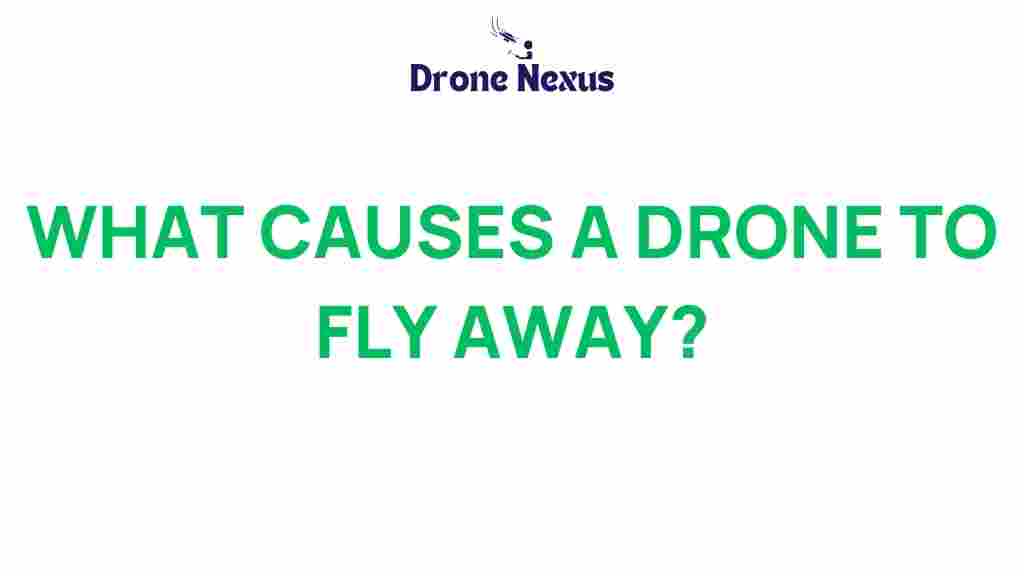What Causes a Drone to Fly Away? Understanding Drone Flight
Drones have revolutionized various industries, from photography to agriculture, offering unparalleled aerial views and capabilities. However, one of the most concerning issues that drone operators face is when their drone unexpectedly flies away. This phenomenon can be alarming and frustrating, especially for those who have invested time and money into their aerial equipment. In this article, we will unravel the mysteries behind rogue flights and explore the common causes that lead to a drone flight going awry. Understanding these factors can help you prevent potential mishaps and ensure a safer flying experience.
Common Causes of Uncontrolled Drone Flight
When a drone flies away, it can leave operators perplexed. Here are some of the most common reasons that contribute to this issue:
- GPS Signal Loss: Drones rely heavily on GPS for navigation. If your drone loses its GPS signal due to environmental factors or interference, it may drift away uncontrollably.
- Battery Failure: All drones depend on battery power. If the battery runs low, the drone may attempt to return to its home point, or worse, it may just lose power and descend rapidly.
- Firmware Glitches: Outdated or corrupted firmware can lead to erratic drone behavior, including sudden changes in flight patterns.
- Interference: Other electronic devices, Wi-Fi signals, or even other drones can interfere with the drone’s controls, causing it to veer off course.
- Pilot Error: Sometimes, the operator may inadvertently input the wrong commands, leading to a loss of control.
- Environmental Factors: High winds, sudden gusts, or changes in weather can impact a drone’s stability and cause it to fly away.
Step-by-Step Process to Diagnose Drone Flight Issues
If your drone has flown away or behaves erratically during flight, it’s essential to diagnose the issue systematically. Here’s a step-by-step guide you can follow:
Step 1: Check the GPS Signal
Before taking off, ensure that your drone has acquired a strong GPS signal. Most drones have an LED indicator that shows the status of GPS connectivity. Aim for a minimum of 6-8 satellites for optimal performance.
Step 2: Inspect the Battery
Examine the battery’s health and charge level. A low battery can cause the drone to initiate a fail-safe return or, in some cases, power off mid-flight. Always carry a spare battery when flying for extended periods.
Step 3: Update Firmware
Ensure that your drone’s firmware is up to date. Manufacturers often release updates to fix bugs and improve performance. Check the manufacturer’s website for the latest version and follow their instructions for installation.
Step 4: Test for Interference
Conduct a pre-flight check to identify any potential sources of interference. This includes turning off nearby electronic devices and avoiding flying in areas with many Wi-Fi networks.
Step 5: Review Flight Logs
Most drones keep a flight log that records data during each flight. Analyze this log to identify any anomalies that occurred before the drone flew away. This information can provide insights into what went wrong.
Step 6: Evaluate Environmental Conditions
Always check the weather conditions before flying. Wind speed, temperature, and precipitation can significantly impact drone flight. Avoid flying in high winds or poor visibility situations.
Troubleshooting Tips for Drone Flight Issues
If you find yourself dealing with an unexpected flight behavior, here are some troubleshooting tips to help you regain control:
- Reset the Drone: Sometimes, a simple reset can resolve temporary issues. Power off the drone and the remote controller, then restart both.
- Calibrate the Drone: Regular calibration can improve flight stability. Follow the manufacturer’s instructions to calibrate the compass and IMU (Inertial Measurement Unit).
- Fly in Open Areas: To minimize interference and obstacles, fly your drone in open spaces away from buildings and other electronic devices.
- Practice Manual Control: Familiarize yourself with manual flying controls. This skill can be invaluable in regaining control during an unexpected flight situation.
- Monitor Drone Alerts: Pay attention to any alerts or warnings from your drone’s app or controller. These notifications can provide crucial information about the drone’s status.
Preventive Measures for Safer Drone Flight
To prevent your drone from flying away in the first place, consider the following precautionary measures:
- Pre-Flight Checklist: Create and follow a pre-flight checklist to ensure all systems are functional before takeoff.
- Regular Maintenance: Keep your drone in good condition with regular checks and maintenance. This includes cleaning the propellers and checking for any physical damage.
- Use a Drone Leash: Some operators opt for safety features like drone leashes, which can help prevent the drone from drifting too far.
- Set a Return-to-Home Point: Always set a clear return-to-home point before flying. This feature can help in case of signal loss or other emergencies.
- Stay Informed: Join online forums or groups of drone enthusiasts to share experiences and learn from others’ mistakes.
Conclusion
Understanding the causes of rogue drone flights can significantly enhance your flying experience. By familiarizing yourself with the factors that can lead to a drone flight going awry, you can take proactive measures to ensure a smooth operation. From checking GPS signals to keeping your firmware updated, every detail counts in maintaining control over your drone. Remember, safe and responsible drone flight is not only about following regulations but also about understanding the technology you are working with.
For more detailed information on drone regulations and safe flying practices, visit the Federal Aviation Administration (FAA) website. And, for a deeper dive into drone technology, check out our comprehensive guide on drone maintenance.
By taking the time to learn about drone flight and implementing the suggested tips, you can contribute to a safer flying community and enjoy the thrilling experience that drone flying offers.
This article is in the category Safety and created by DroneNexus Team
